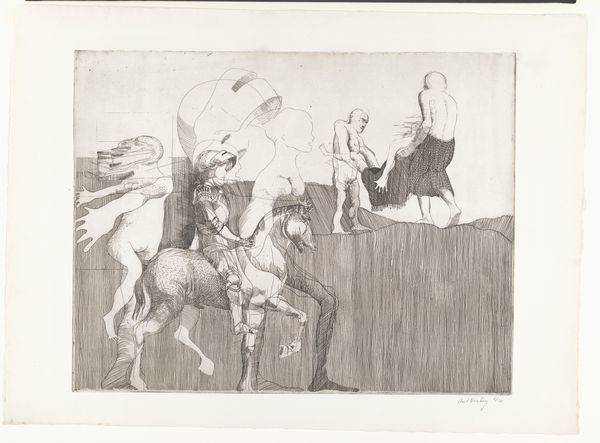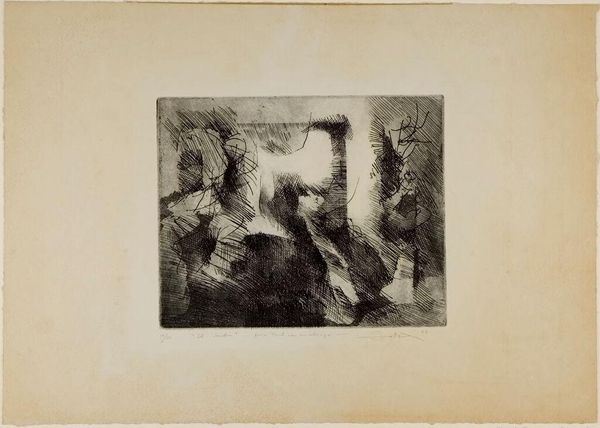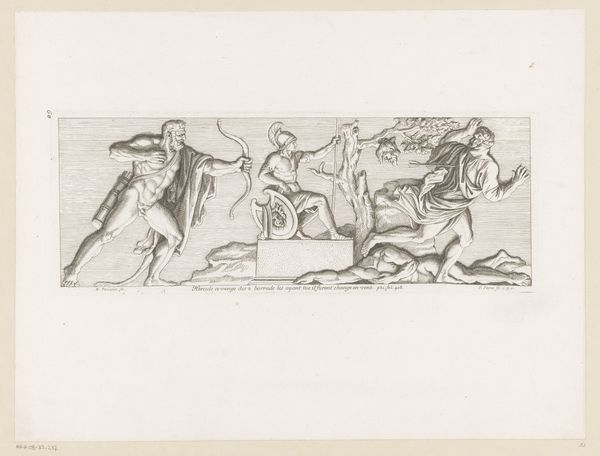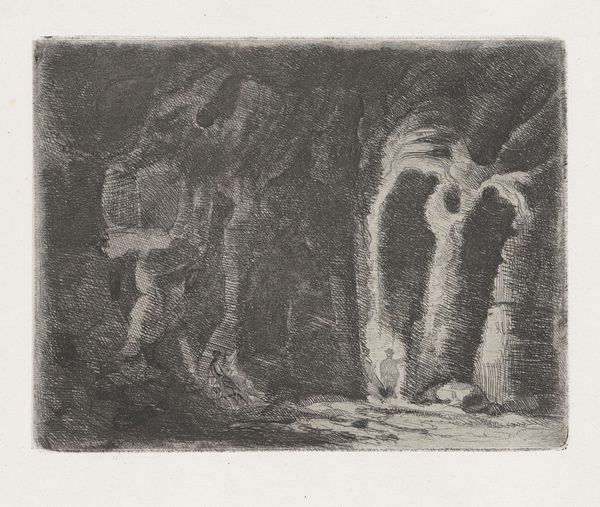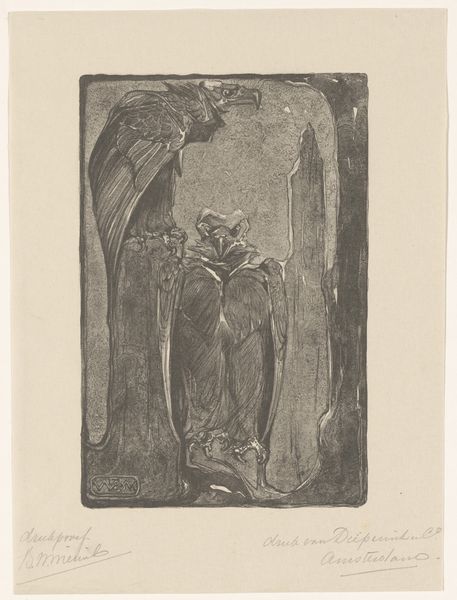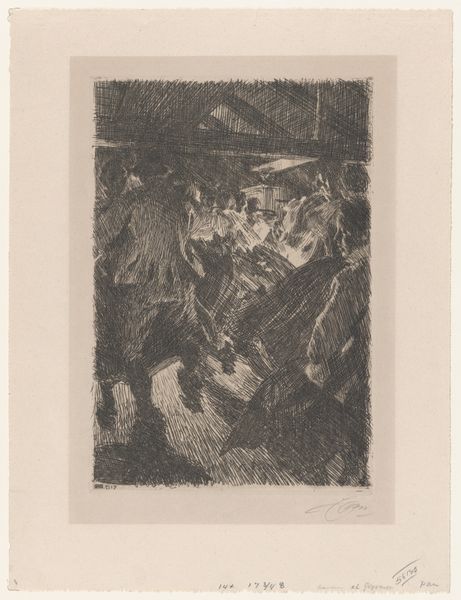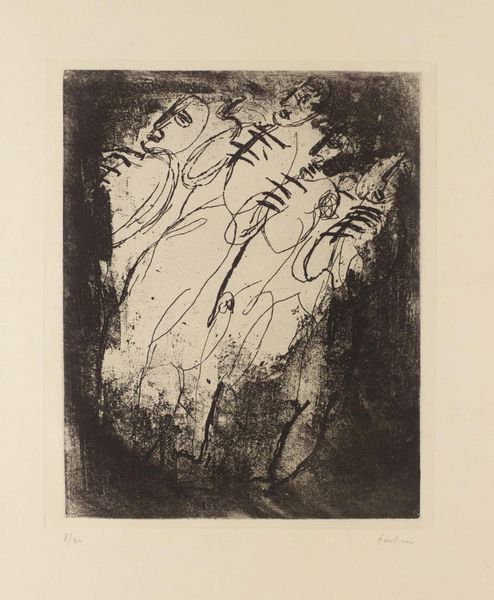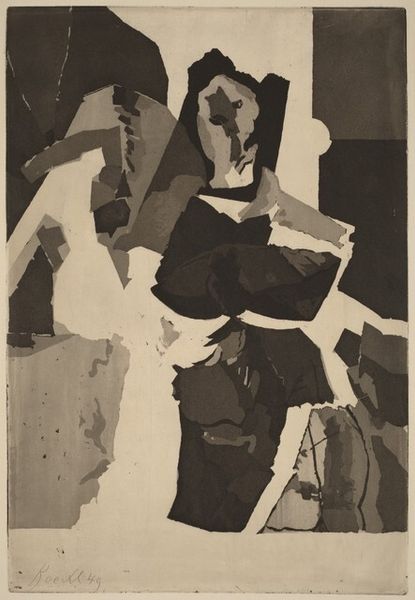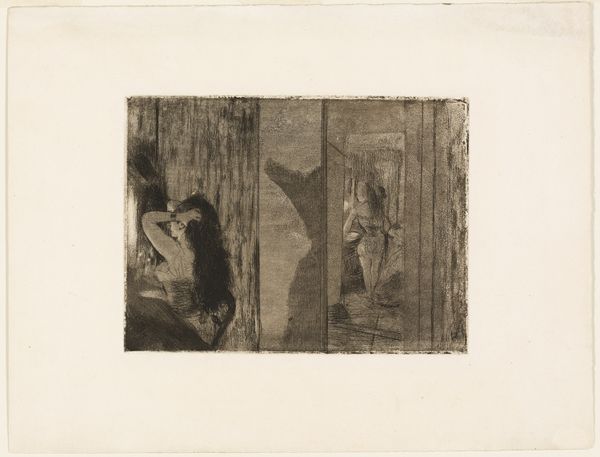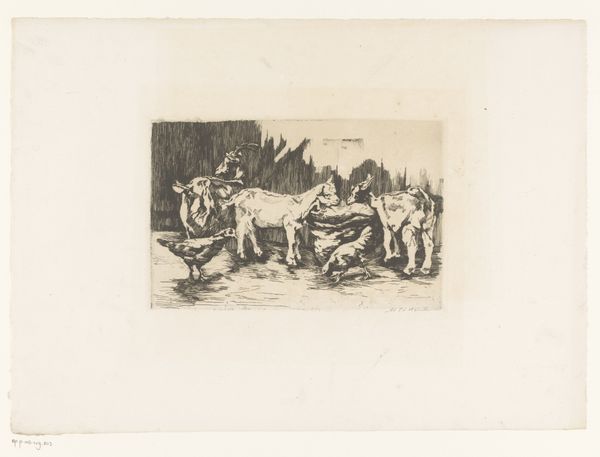
drawing, paper, ink
#
drawing
#
figuration
#
paper
#
ink
#
romanticism
Dimensions: height 250 mm, width 350 mm
Copyright: Rijks Museum: Open Domain
Editor: This drawing, titled "Aangespoelde beenderen," or "Beached Bones," created between 1809 and 1810 by Anthonie van den Bos, uses ink on paper. It’s… stark, isn’t it? The stark realism of the bones contrasted against the softness of the wash… What do you make of it? Curator: For me, it begins with the materiality itself. The choice of ink and paper, inexpensive and readily available, suggests a democratisation of artmaking, away from precious materials. The labour involved in rendering these bones so realistically also demands attention. The repetitive process of applying ink wash builds value, a transformation of basic materials into a carefully constructed image. What societal forces shaped the perception and use of those materials during this period? Editor: I hadn't considered that perspective before. You're right, ink and paper weren't exactly high-status materials. But why bones? Is there some inherent political tension there too? Curator: Precisely. What does it mean to depict something discarded, a remnant? Does the romantic style conflict with the stark reality? It invites a focus on the systems of production and consumption. What do these beached bones represent in relation to 19th-century society's treatment of labor or its understanding of class division? What forces exposed these bones? How does their value transform? Editor: I see what you mean. The romantic lens seems to soften their reality. Thank you, it makes me want to investigate the impact of the societal norms reflected in these bones. Curator: It highlights how artists and even viewers are constantly negotiating power relationships, and what counts as a legitimate subject of art is continuously being challenged by shifting historical circumstances. It's certainly food for thought.
Comments
No comments
Be the first to comment and join the conversation on the ultimate creative platform.

